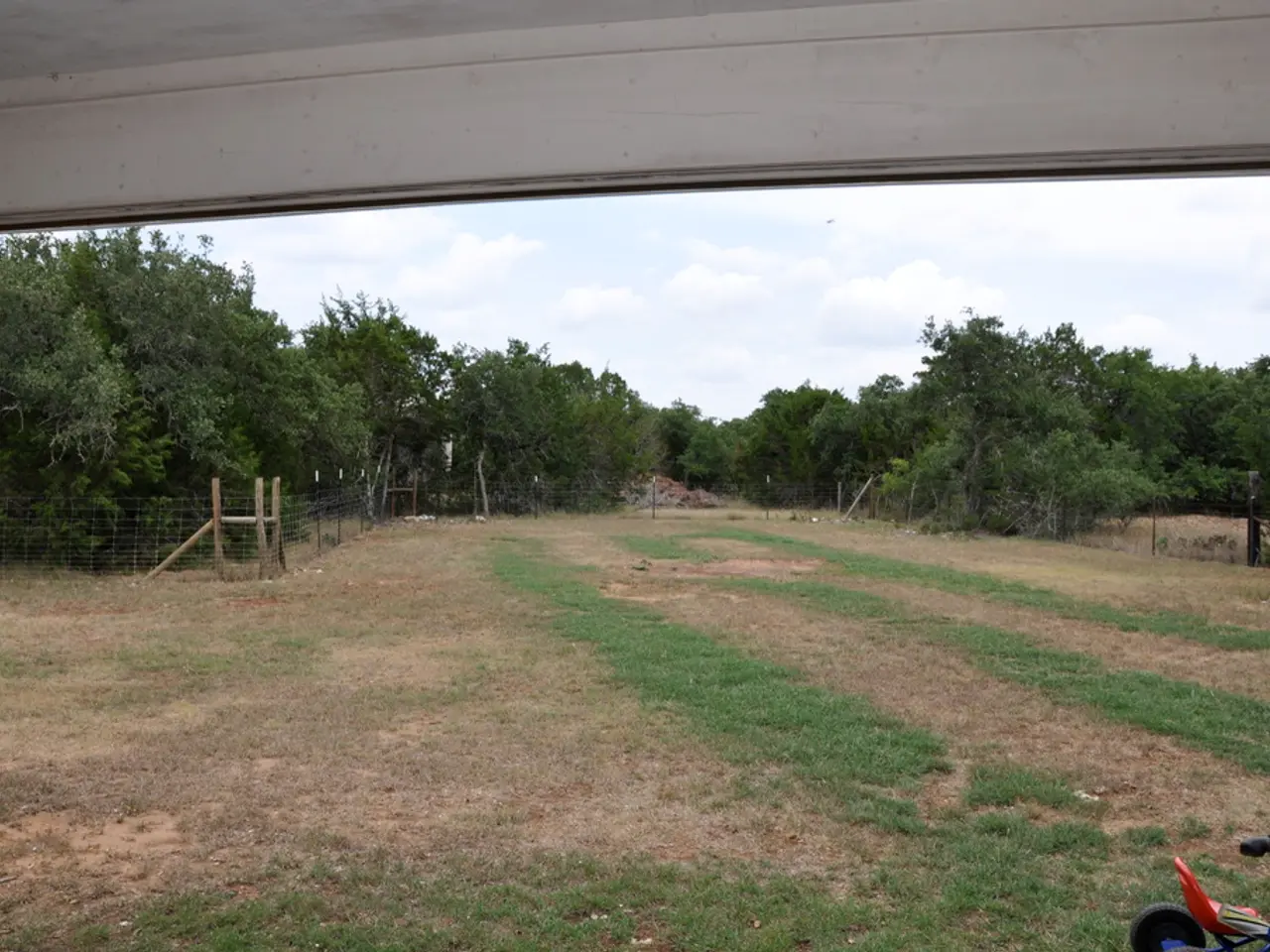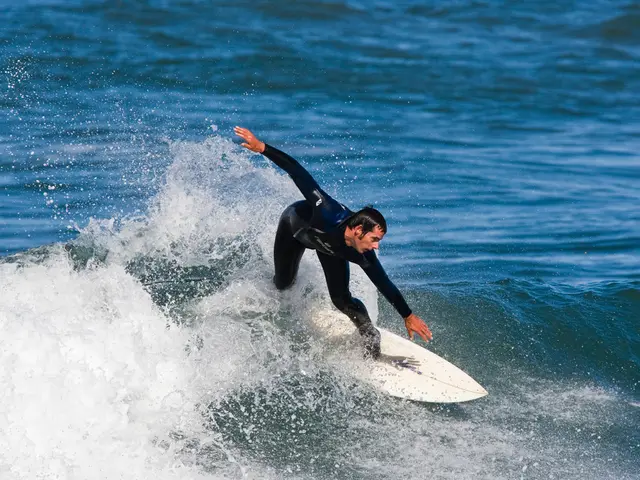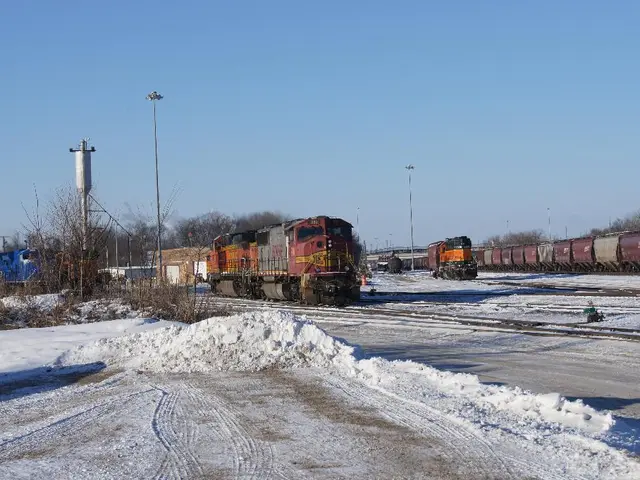Essential Insights and Answers for RVing Safely Along Baja California Coastlines (Shying Away from the Uncertainties)
Exploring Baja: A Haven for RV Travelers
Baja, Mexico, offers a unique blend of otherworldly landscapes, rich history, and pristine beaches, making it an ideal destination for RV travelers. From the treacherous landscapes of Cataviña to the oasis towns of San Ignacio and Mulegé, each location boasts a rich history and historical missions that are waiting to be discovered.
Many RV travelers are drawn to Baja for its warmer weather and water, where they can explore and stay on a variety of beaches on either side of the peninsula. The roads may be narrow and often without a shoulder, but many popular rustic beach camping areas are easily accessible with 2WD.
For those seeking formal campgrounds with amenities comparable to what they may be used to in the U.S. and Canada, Clam Beach Resort near Ensenada and Pete's Camp in San Felipe are options. However, most other campgrounds in Baja offer a more rustic experience, with basic facilities that are much more primitive than what one might expect north of the border.
Traveling in a group is typically more fun and safer in Baja, but traveling alone can also lead to unique experiences and relationships. Chris Sands, the local expert for the USA Today travel website 10 Best, writer of Fodor's Los Cabos travel guidebook, and a contributor to numerous websites and publications, recommends joining a small-group caravan tour, such as those offered by Baja Amigos.
Baja Amigos caravan tours offer a small-group setting, professionally planned itineraries, guidance, and affordability. The small group size creates an intimate experience, where strangers become friends and create lifelong memories. These tours cut months, if not years, of planning logistics and overcoming stressful situations.
The peak travel season for RVers in Baja is between November and early April. During this time, temperatures are typically mild, with nights and mornings being cool and in the 50-degree Fahrenheit range in Baja California, while daytime temperatures can be warm (over 80 degrees Fahrenheit) in Baja California Sur.
When crossing into Baja, RVers require the Forma Migratoria Múltiple (FMM), Mexican auto insurance, and vehicle registration valid for up to 180 days. It is important to carry a valid passport or passport card, obtain a Temporary Vehicle Import Permit (TVIP) if traveling beyond the 20-35 km free border zone, and get a Mexican Tourist Permit (FMM) if staying longer than 72 hours and traveling beyond the border zone. Border agents may not always remind you, but it is a legal requirement, and enforcement has increased recently.
It is also crucial to purchase Mexican auto insurance, as U.S. or Canadian insurance policies are not valid in Mexico. Mexican liability insurance for your RV is mandatory and must be obtained from an insurer recognized by Mexican authorities before or at the border. Failure to have proper insurance can result in being cited or worse.
When crossing into Baja, it is important to choose the correct customs lane and declare items transparently. At the border, select the green lane ("Nada que declarar") if you have only personal items under value thresholds. Use the red lane ("Declaración") if you have commercial goods, restricted items, or are unsure. Declaring honestly avoids fines, confiscation, or potential vehicle impoundment.
If traveling with pets, ensure all vaccinations, especially rabies, are current and certificates available, since authorities may check this. In terms of terrain, there is one main highway (Federal Highway 1) that runs nearly 1,000 miles through the length of the peninsula.
Baja is generally safe for campers, and the Mexican people are wonderfully hospitable and welcoming. It is always important to recognize and respect local customs and norms and to try to assimilate into Mexican culture while traveling.
Campers can either camp for free or for a minimal fee and wake up with million-dollar views outside their door. Los Barriles, along the southern end of the peninsula, is a camper's haven with a handful of great campgrounds and hyperscenic views. Campestre Maranatha in La Paz offers arguably the best campground experience in Baja California Sur with level sites, full 50-amp hookup, and a refreshing pool.
The biggest attractions in the busy RV season are whale watching opportunities, particularly gray whale watching in Baja California Sur and swimming with whale sharks in La Paz. Baja Amigos caravan tours provide unique experiences and meals that reflect the cultural and geographic diversity of the peninsula.
In conclusion, the key is to prepare your legal paperwork (passport, FMM if needed, vehicle import permit) and carry valid Mexican liability insurance before crossing, and to be honest and transparent with customs to ensure a smooth entry into Baja, Mexico. Failure to follow these legal requirements can lead to fines, detention, or vehicle impoundment.
- Baja, Mexico, offers a unique blend of otherworldly landscapes, rich history, and pristine beaches, making it an ideal destination for RV travelers seeking warmer weather and water.
- From the treacherous landscapes of Cataviña to the oasis towns of San Ignacio and Mulegé, each location boasts a rich history and historical missions that are waiting to be discovered by travelers.
- For those seeking formal campgrounds with amenities comparable to what they may be used to in the U.S. and Canada, Clam Beach Resort near Ensenada and Pete's Camp in San Felipe are options, but most other campgrounds in Baja offer a more rustic experience.
- Chris Sands, a local expert, recommends joining a small-group caravan tour, like those offered by Baja Amigos, for an intimate experience, creating lifelong memories while cutting months of planning logistics and overcoming stressful situations.
- The peak travel season for RVers in Baja is between November and early April, when temperatures are mild, with nights and mornings being cool and days warm, making it an ideal time for whale watching opportunities and swimming with whale sharks.
- When crossing into Baja, RVers require the Forma Migratoria Múltiple (FMM), Mexican auto insurance, and vehicle registration valid for up to 180 days, a valid passport or passport card, a Temporary Vehicle Import Permit (TVIP), and a Mexican Tourist Permit (FMM) if staying longer than 72 hours and traveling beyond the border zone.
- Baja Amigos caravan tours provide unique experiences and meals that reflect the cultural and geographic diversity of the peninsula, with the biggest attractions in the busy RV season being whale watching opportunities and swimming with whale sharks. It is essential to respect local customs, assimilate into Mexican culture while traveling, and be honest and transparent with customs when entering Baja, Mexico.




